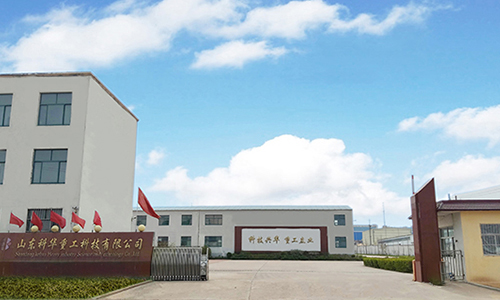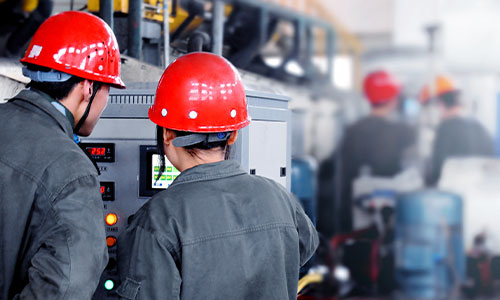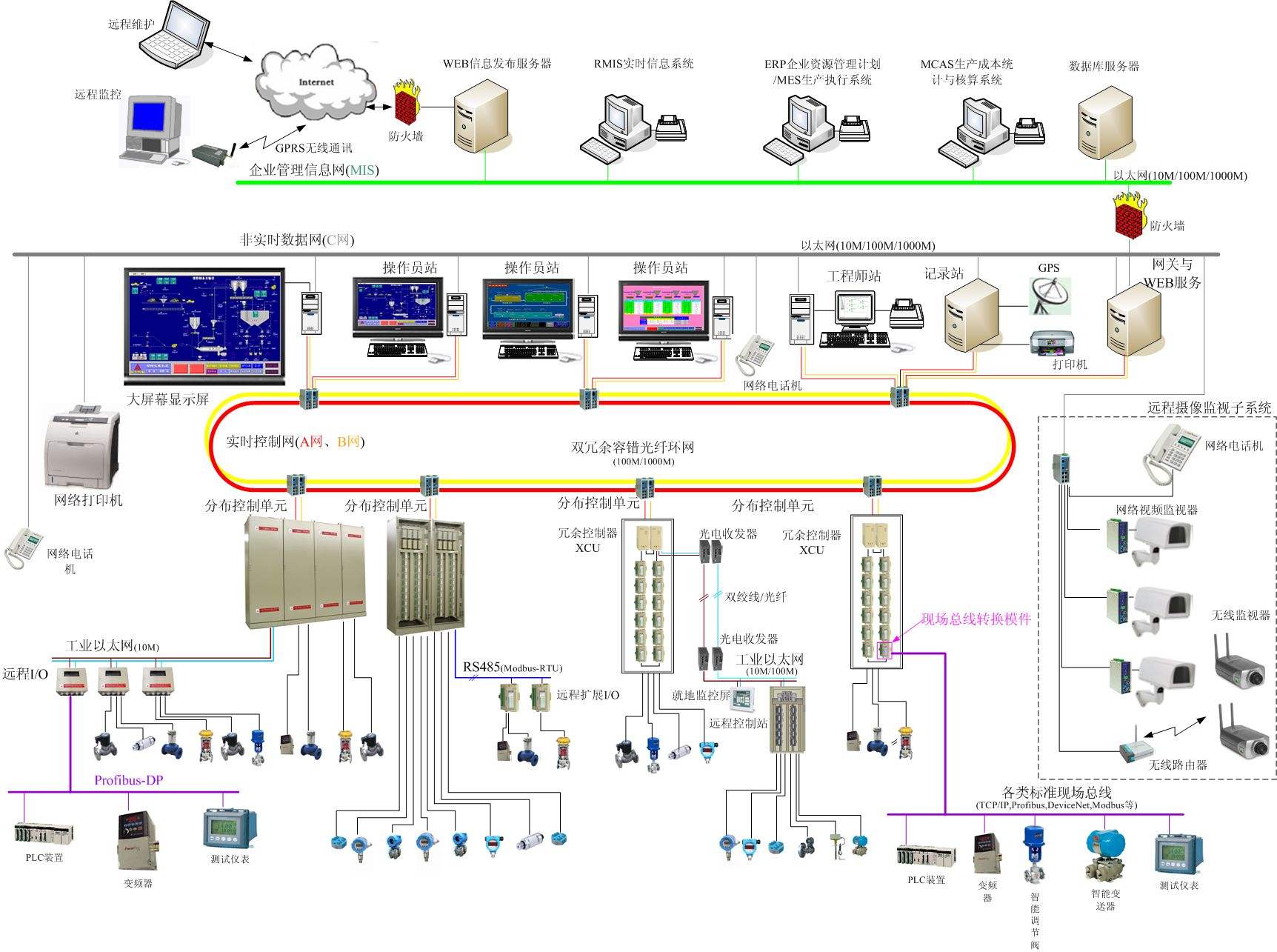Distributed control system is referred to as DCS, which can also be literally translated as "distributed control system" or "distributed computer control system". It adopts the basic design idea of decentralized control, centralized operation and management, and adopts a multi-layer hierarchical, cooperative and autonomous structure. Its main feature is its centralized management and decentralized control. At present, DCS has been widely used in electric power, metallurgy, petrochemical and other industries.
DCS usually adopts a hierarchical structure, as shown in Figure 3.1, each level consists of several subsystems, each subsystem achieves several specific limited goals, forming a pyramid structure.
Reliability is the life of DCS development. There are three main measures to ensure the high reliability of DCS: one is to widely use high-reliability hardware equipment and production processes; the other is to widely use redundancy technology; the third is to widely implement software design. System fault-tolerant technology, fault self-diagnosis and automatic processing technology. The MTBF of most distributed control systems today can reach tens of thousands or even hundreds of thousands of hours.
In recent years, there have been many new developments in the field of DCS association, mainly in the following aspects.
(1) The system function develops in the open direction The structure of the traditional DCS is closed, and it is difficult to be compatible with the DCS of different manufacturers. The open DCS will give users greater autonomy in system integration. Users can choose equipment from different manufacturers and software resources to connect to the control system according to actual needs to achieve the best system integration. This includes not only the integration of DCS and DCS, but also the generalized integration of DCS and PLC, FCS and various control equipment and software resources.
(2) The intelligent and networked development of industrial control equipment in the direction of digitization, intelligence and networking of instrument technology can promote the further decentralized and downward movement of process control functions, and realize the true meaning of "full digital" and "full decentralized". "control. In addition, due to the high precision, good repeatability and high reliability of these smart instruments, as well as two-way communication and self-diagnosis functions, the installation, use and maintenance of the system are more convenient.
(3) Industrial control software is developing in the direction of advanced control. Extensive application of various advanced control and optimization technologies is the most effective, direct and valuable development direction to tap and improve the comprehensive performance of DCS, mainly including advanced control, process optimization, information Development and industrial application of software such as integration and system integration. In the future, industrial control software will continue to develop towards standardization, networking, intelligence and openness.
(4) The system architecture develops in the direction of FCS. From a purely technical point of view, there are three ways to integrate the fieldbus into the DCS at this stage: ① The integration of the fieldbus on the I/O bus of the DCS system - through a fieldbus interface card hanging on the On the I/O bus of DCS, the information from the field bus that the DCS controller sees is just like coming from a traditional DCS device card. For example, the DeltaV system introduced by Fisher-Rosemount Company adopts this kind of integration scheme. ② Integration of the fieldbus in the network layer of the DCS system—that is, to integrate the fieldbus system on the higher-level network of the DCS. This integration method does not require changes to the DCS control station and has less impact on the original system. For example, the 302 series field bus products of Smar Company can realize the integration of its field bus functions in the network layer of the DCS system. ③ The field bus is integrated with the DCS system in parallel through the gateway - the field bus and the DCS can also be integrated in parallel through the gateway bridge. For example, the field bus system of SUPCON uses the HART protocol bridge to connect the system operating station and the field instrument, so as to realize the communication function between the field bus equipment management system operating station and the HART protocol field instrument.
The focus of DCS has always been on control, and it uses "decentralization" as the key word. However, modern development focuses more on the comprehensive management of system-wide information. In the future, "integration" will become its key word, and it will develop in the direction of realizing the comprehensive automation of the control system, operation system, planning system and management system. Optimal control rises to production scheduling, operation management, and even strategic decision-making at the highest level, forming a flexible and highly automated management and control integration system.

 ABOUTShandong Kehua Heavy Industry Technology Co., Ltd., formerly known as Linqu County Kehua Automatic Control Equipment Factory, was founded in April 1993. On January 10, 2007, the company changed its name to Weifang Kehua Automatic Control Equipment Co. Ltd
ABOUTShandong Kehua Heavy Industry Technology Co., Ltd., formerly known as Linqu County Kehua Automatic Control Equipment Factory, was founded in April 1993. On January 10, 2007, the company changed its name to Weifang Kehua Automatic Control Equipment Co. Ltd PRODUCTThe company's main products are: electronic belt scales, spiral scales, loss-in-weight scales, quantitative feeders, batching systems, hoists and other heavy machinery and equipment. Products are widely used in chemical, cement, steel, mining, thermoelect
PRODUCTThe company's main products are: electronic belt scales, spiral scales, loss-in-weight scales, quantitative feeders, batching systems, hoists and other heavy machinery and equipment. Products are widely used in chemical, cement, steel, mining, thermoelect CONTACTIt is the eternal pursuit of the company to create famous brand products, establish a first-class enterprise, and lead the mainstream of the industry.
CONTACTIt is the eternal pursuit of the company to create famous brand products, establish a first-class enterprise, and lead the mainstream of the industry. NEWSThe company adheres to the operating principles of leading technology and winning by quality, and has close cooperative relations with many colleges and universities and scientific research institutions.
NEWSThe company adheres to the operating principles of leading technology and winning by quality, and has close cooperative relations with many colleges and universities and scientific research institutions.

